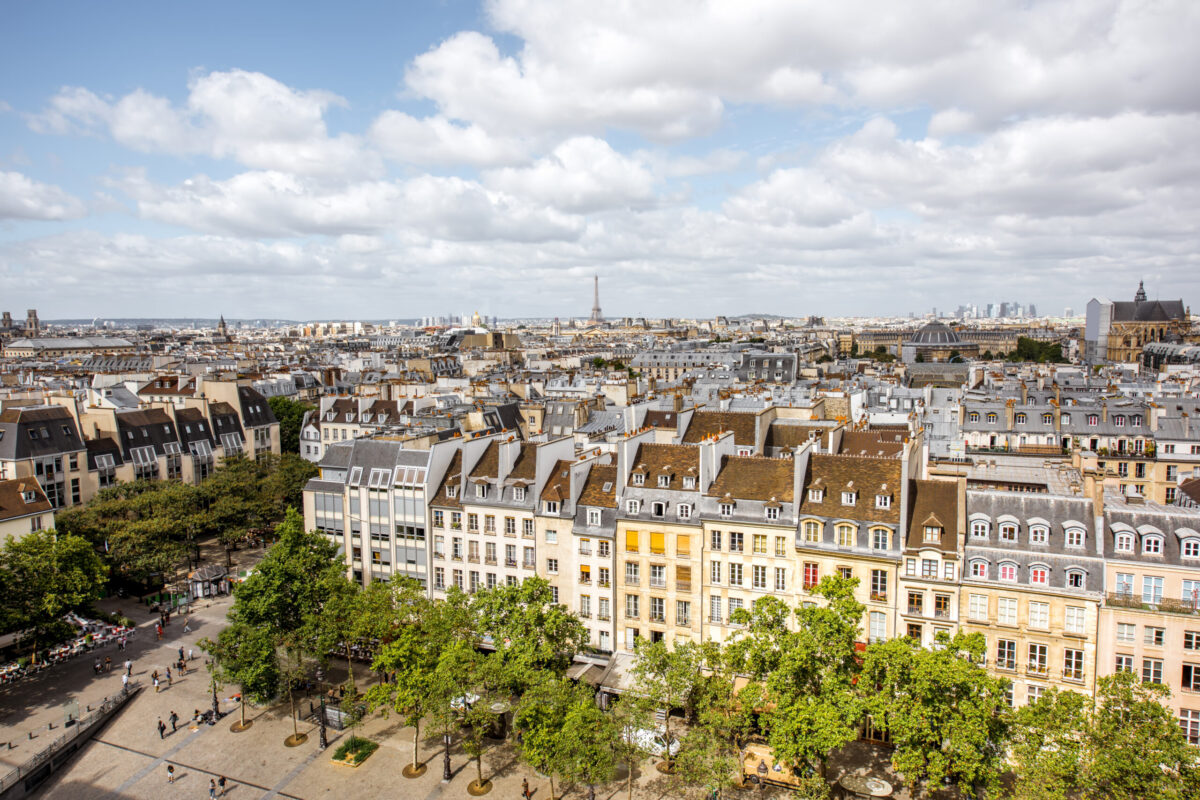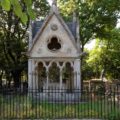People think of Paris as a romantic city, but what they don’t always realize is that it has a long history as a specifically LGBTQ+ city. First of all, France made homosexuality *legal* in 1791: all sodomy laws were eliminated from the law code during the Revolution, 212 years before the Supreme Court did that in the USA.
That doesn’t mean it was a paradise of LGBTQ+ freedom, of course. Cross-dressing remained illegal until the 1970s, for instance. But it was much freer than anywhere else!
This is why Oscar Wilde went to live in France after he was released from prison in 1895. And it is why a long list of famous American and British lesbians lived in Paris. Two examples are Gertrude Stein, who ran a literary salon in Paris where she fostered talents like Picasso and Hemingway, and Sylvia Beach, who founded the famous bookstore Shakespeare & Co., where she published James Joyce’s Ulysses, which was too scandalous to appear in print in the USA or UK. James Baldwin also wrote his first novel in Paris and set his groundbreaking gay novel Giovanni’s Room there. He went to Paris partly to escape the racial segregation that was then in force in the USA, but also undoubtedly partly because of France’s greater degree of sexual freedom.
There are a lot of places you can visit in Paris that connect to its LGBTQ+ history. For instance, you can visit (or get a cocktail at) the hotel where Oscar Wilde died, right by the main French art school, L’Ecole des Beaux Arts, or have a coffee at the Café de Flore, right across from the church of Saint-Germain-des-Prés, where James Baldwin used to sit and write (as did Sartre and de Beauvoir).
But probably the best place of all to follow Paris’ LGBTQ+ history is Père Lachaise Cemetery, where you can find the tombs of many LGBTQ+ greats, including Wilde (buried with his first lover and truest friend, Robbie Ross), Stein (buried with her wife, Alice B Toklas), Proust, and Colette, as well as those of some great gay icons, such as Maria Callas and Edith Piaf. The cemetery is set on a hillside and has great views of Paris. And you are bound to stumble upon the tomb of one of your idols—Chopin, Jim Morrison, or whoever fascinates you. I was for instance recently surprised to find the tomb of the trans man Colette had an affair with after she left her first husband—and whom she kissed during a show at the Moulin Rouge, causing a big scandal in Paris in 1906.
Also keep an eye out for the foxes that live in the cemetery!
Join us on our upcoming tour art history tour of Gay Paris:
LGBTQ+ History and Art Tour of Paris, from the Court at Versailles to the Paris Runways











France decriminalized sodomy 212 years before the United States Supreme Court ruling overturning such laws in the U.S. (not 113 years as stated in the blog).
What a wonderful surprise discovering you and your tours. Please correct me if I am mistaken, but I believe I met you just outside the room where the Mona Lisa is displayed and you were mentioning that you gave gay tours. I remember you mentioning something about Mona Lisa’s face actually being the face of da Vinci‘s lover, which stuck in my mind. I believe you gave me your contact information, but I have since lost it, which I have regretted. We would have met some time ago in September or October 2021. You said something about London, and I think you mentioned that you were actually living there not in Paris at the time.
Anyway, I hope you are the Andrew I met back then because I would like to keep your contact information to do tours with you the next time I’m in Paris, which may be in April or May.
Hi James, good to hear from you. That sounds like me, as I do believe that the face of Leonardo’s assistant/model/boyfriend Gian Giacomo Caprotti influenced a lot of his portraits, including likely the Mona Lisa. I will in fact be giving a tour in Paris from May 5 to 10. Check it out at https://www.oscarwildetours.com/lgbtq-history-and-art-tour-of-paris/
And let me know if you have any questions!
How wonderful to get back in touch, Andrew. Unfortunately I will be in Paris before that between April 20 and 24. Any chance you’ll be there then?By May 5, I hope to be in Salamanca and remain there for a few weeks.